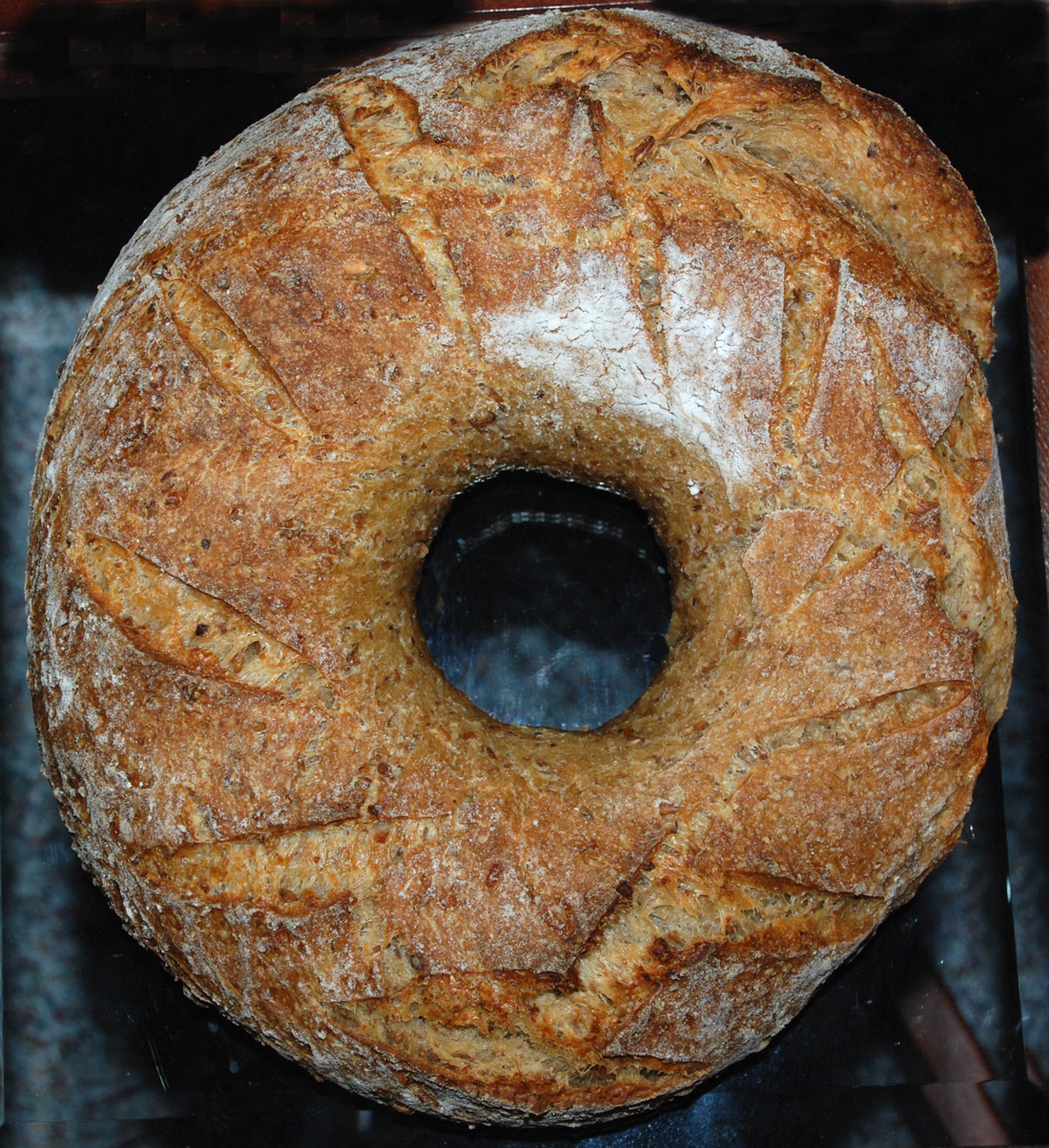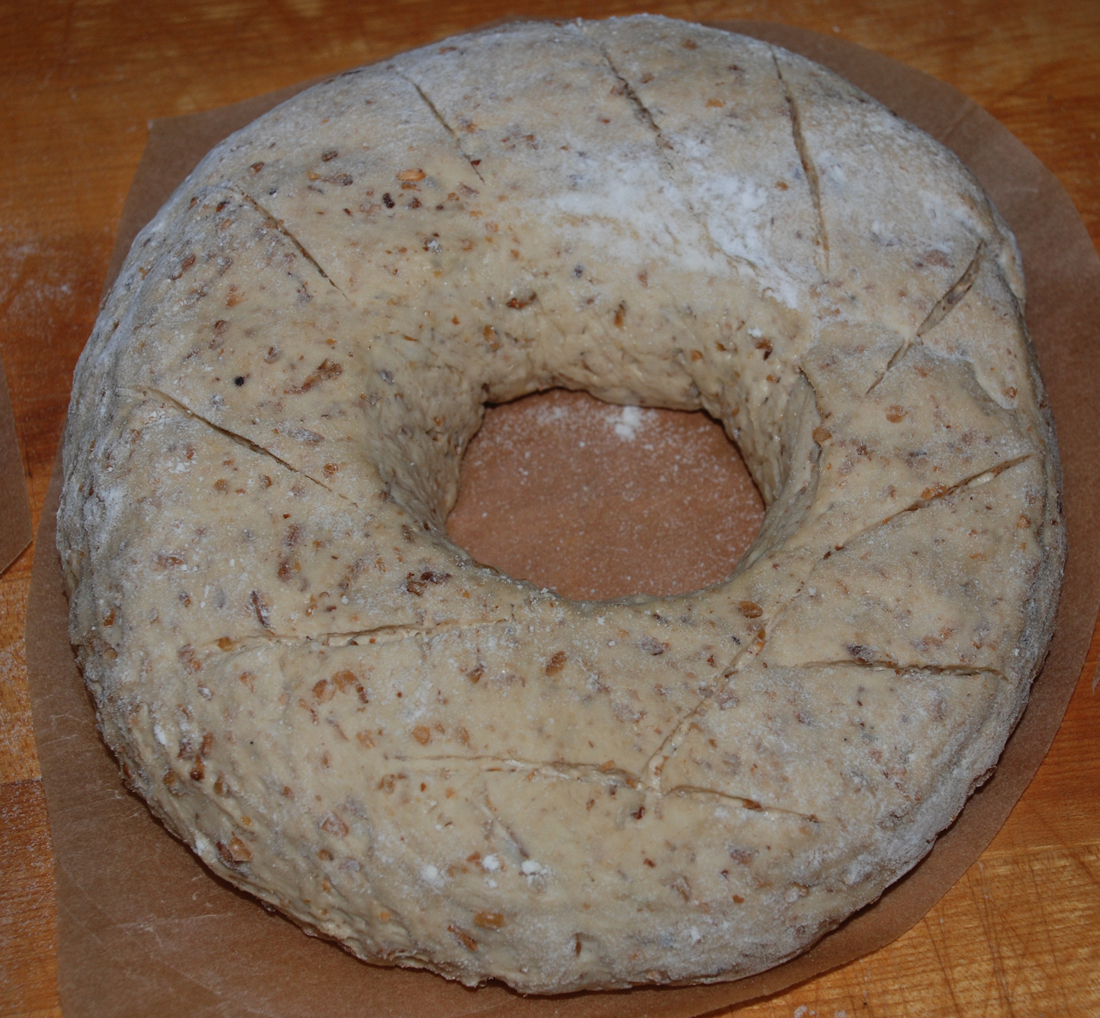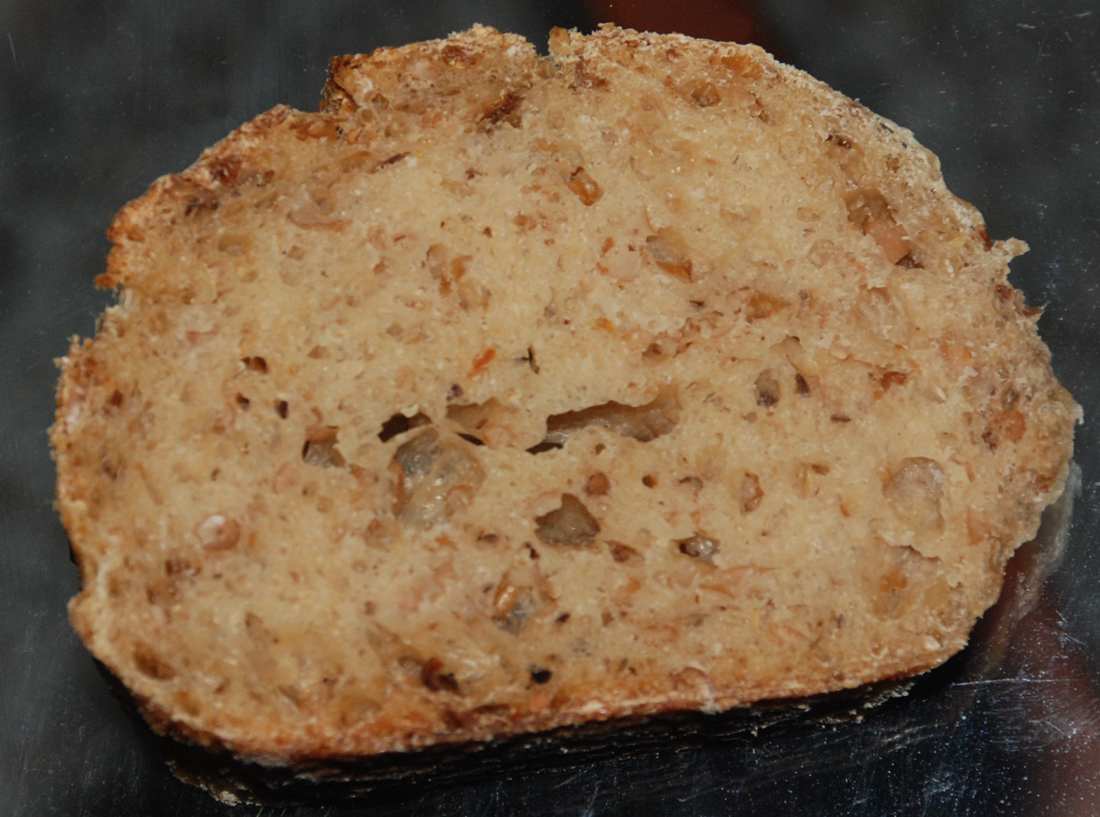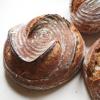 I was inspired to try adding some balsamic vinegar into one of my breads after reading about Karen Hanseata's Wild Rice bread on the Fresh Loaf this past week. I have some cherry balsamic that I love using so I was curious to see if it would have any affect on the taste of my bread.
I was inspired to try adding some balsamic vinegar into one of my breads after reading about Karen Hanseata's Wild Rice bread on the Fresh Loaf this past week. I have some cherry balsamic that I love using so I was curious to see if it would have any affect on the taste of my bread.
While looking for some different components to add to my next bake I discovered that my wife had stashed some Toasted Almond Flour in the refrigerator so I figured why not give it a try.
I also used some Potato flour and Durum flour along with some hickory smoked sea salt and assorted all natural grains for this bake.
I cut back on the hydration slightly from my previous multi-grain breads and not counting the 359 grams of water used in the soaker it comes in at only 56%. There is no doubt that the water from the soaker makes the final dough much moister than 56%. I also did not count the soaker grains as part of the flour. According to the BBGA (Bakers Guild of America) soakers including the water and other ingredients should be considered "hydration neutral". This is obviously a difficult concept to control but none the less that is the prevailing rule in the industry.
For this bake I made a boule as well as a circular shape similar to a large donut.
The final dough came out very tasty. You can see the toasted almond flour imparted a slightly orange tinted color in the crumb and it gives it a very nutty flavor. I can't say that I tasted the cherry balsamic vinegar but I'm sure it added to the overall flavor profile somehow. The crumb is nice an open and moist and you can see some of the soaker grains melded together.
If you venture to try this, please let me know how your attempt comes out.
Ingredients
Soaker
28 Grams English Malted Flakes
60 Grams Bulgar Wheat
55 Grams Organic Oat Bran
55 Grams Cracked Wheat
285 Grams Boiling Water
Final Dough
425 Grams White Starter recently refreshed (65% Hydration Seed Starter)
200 Grams Durum Semolina Flour (KAF Brand-make sure you don't use the Fancy Semolina flour which is too gritty)
250 Grams Bread Flour (KAF)
58 Grams Toasted Almond Flour (KAF)
35 Grams Potato Flour
14 Grams Hickory Smoked Seas Salt or Table Salt
264 Grams Water, 90 degrees F.
12 Grams Cherry Balsamic Vinegar (Feel free to substitute any Balsamic you have or just add more water)
Directions
Mix all ingredients for soaker in a bowl and add boiling water. Let it sit for 2-3 hours covered until the grains are soft. (I actually only let it sit for 1 hour which was long enough).
Add the water and flours into your mixing bowl and mix for 2 minutes on low. The dough should come together in a shaggy mess and should be relatively moist at this point. Let it rest (autolyse) for 25 minutes and then add the salt, balsamic vinegar and the soaker and mix for 4 minutes more on medium low-speed. If necessary you can add some additional water or flour but be careful not to make the dough too dry. It should be relatively sticky but not soupy.
Remove dough from mixing bowl to work surface and do a stretch and fold. You may need to wet or oil your hands and the work surface since the dough will still be very sticky at this point. Form the dough into a ball and let it rest uncovered for 10 minutes. Let the dough rest uncovered for 10 minutes. After 10 minutes do another stretch and fold and cover the dough with a moist lint free towel or plastic wrap sprayed with non-stick cooking spray. Do another stretch and fold two more times letting the dough rest 10 minutes each time.

After the last stretch and fold put the dough into an oiled bowl and cover it tightly.
Let the dough sit in your bowl for 2 hours at room temperature. It should only rise slightly at this point. After the 2 hours are up put in your refrigerator for at least 12 hours or up to 3 days.
When ready to bake the bread take your bowl out of the refrigerator and let it sit at room temperature for around 2 hours. After 2 hours shape the dough as desired being careful not to handle the dough too roughly so you don't de-gas it.

To make the circle bread I formed half the dough into a cylinder and formed it into a circle. I placed a small glass bowl in the middle wrapped in plastic wrap that I sprayed with cooking spray to prevent it from sticking to the dough. I placed the dough into a large banneton and let it rest per below.
Let it sit at room temperature for 2 hours covered with oiled plastic wrap or a moist cloth.
Pre-heat oven with baking stone (I use one on bottom and one on top shelf of my oven), to 500 degrees F.
Slash loaves as desired and place empty pan in bottom shelf of oven.


Pour 1 cup of very hot water into pan and place loaves into oven.
Lower oven to 450 Degrees and bake for 25 - 35 minutes until bread is golden brown and internal temperature reaches 200 degrees.
Shut the oven off and leave the bread inside with the door slightly open for 10 minutes. This will help dry the loaves out and keep the crust crunchy.
Let cool on cooling rack and enjoy!



































